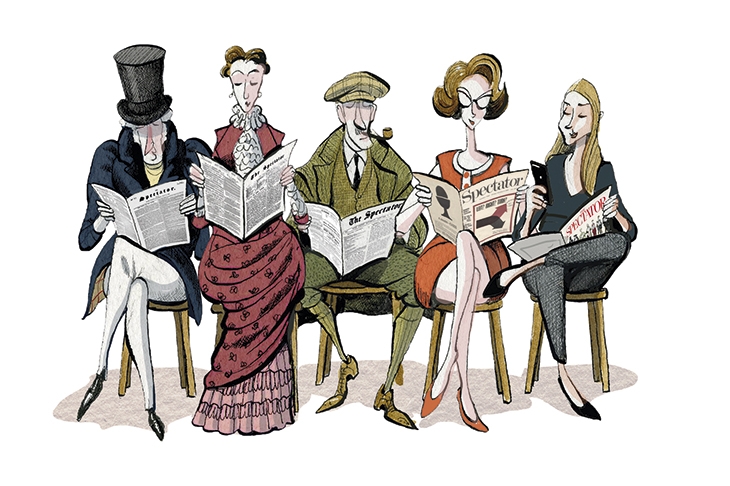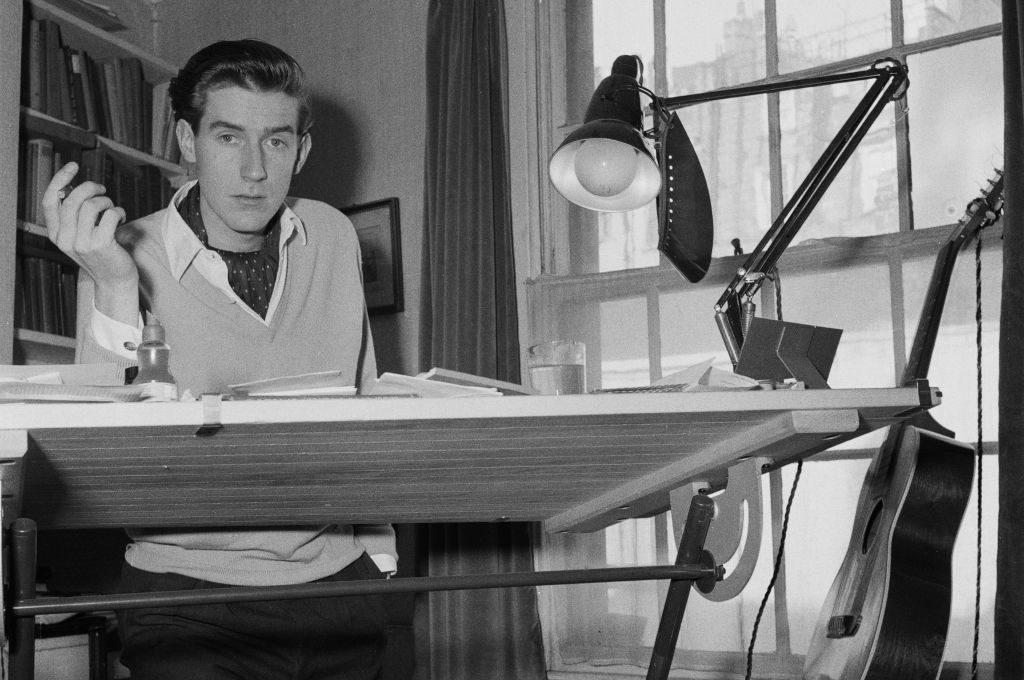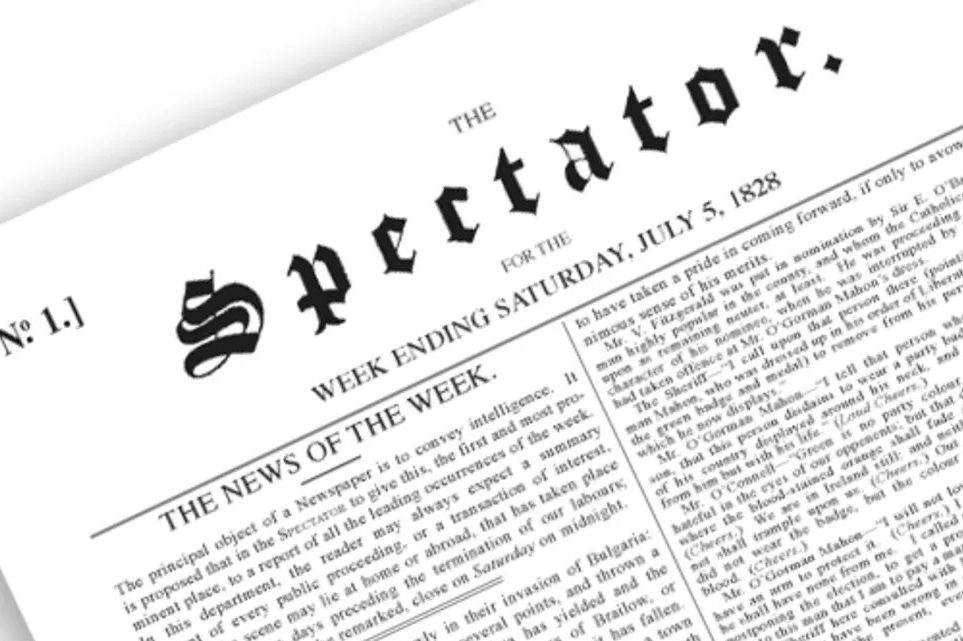The Spectator is a child of the 19th century, and damned proud of it. First published in 1828, the link provided by its 10,000 issues to a long-vanished age of Regency waistlines and Romantic poets is one of the great wonders of journalism. Its success was built upon Victorian foundations, yet it is a peculiarity of the current media landscape that The Spectator, the only British current affairs magazine actually to have been published in the 19th century, should in many ways seem the least Victorian of the lot.
The New Statesman, Prospect, Standpoint: all have a certain quality of moral earnestness that one could imagine Gladstone admiring. The Spectator, by contrast, seems to breathe the coffee-perfumed air of an earlier age. Right from its first edition, it has been shaded by the specter of a vanished sensibility. In its morals, its values, its style, there is little of the wing-collar about it. Dress The Spectator up in period costume, and it would have to sport a powdered wig.
The magazine has always cast a certain wistful gaze back at the 18th century. This is evident enough from its title. To launch a new publication back in 1828 was no less a leap of faith than it would be today — but to call it The Spectator was a gesture of self-confidence so lavish that it might have seemed to verge on the conceited. The original Spectator, founded in 1711, was a daily publication which, despite folding after a year, had come to be enshrined over the course of the 18th century as a supreme model of English prose.
As David Butterfield describes in his history of the magazine, Joseph Addison and Richard Steele, the men who had written the essays which constituted The Spectator’s daily offering, were admired by even the most exacting critics. ‘Who ever wished to attain an English style, familiar but not coarse, and elegant but not ostentatious, must give his days and nights to the study of Addison.’ This decree, coming from the robustly Tory Dr Johnson, was praise indeed for a man who had ranked as a most notorious Whig. To call a magazine The Spectator, then, was to follow in the footsteps of giants.
But Robert Rintoul, the enterprising Scottish radical who served as its first editor, knew what he was doing. Addison and Steele had given to ‘Mr Spectator’ the attributes of a man ideally qualified to provide a newly urban and commercial society with its role model: interested in the affairs of the day, knowledgeable about literature, art and music, sociable, amusing and amused. Above all, ‘Mr Spectator’ affected to eschew the rancorous polarization that, then as now, was such a characteristic of English society.
Both Addison and Steele knew that the medicine of their Whiggery was likelier to be swallowed by their readers if sugared with wit. It was a measure of their success that James Boswell — who defined himself throughout his great biography of Dr Johnson as being, like his hero, a Tory — should consciously have sought to emulate the easy disposition of ‘Mr Spectator’. ‘Indeed I had accustomed myself so much to laugh at every-thing that it required time to render my imagination solid…’
For Rintoul, as it had been for Addison and Steele, the great enemy of journalism was dullness. Today’s Spectator, almost 200 years on, still manifestly subscribes to that conviction. It is evident in its patronage of writers who have variously drunk themselves to death or gone to prison for possession of cocaine; in the surge of sex scandals that, during the editorship of the current prime minister, added so hugely to the gaiety of the nation; in its willingness to probe the limits of what liberal opinion in Britain today regards as acceptable, and to do so in a tone of satire that Swift might well have enjoyed.
It is evident too in its ongoing commitment to the discovery made long ago by Addison and Steele: that a political perspective can most effectively be promoted by sweetening it with variety and lightness of style. Much as Pope, in the original version of The Dunciad, shuddered before the prospect that ‘Wit’s vain works shall fall / And universal Dulness cover all!’, so does The Spectator today.
Small wonder, then, that its blog should be called Coffee House. By the reign of Queen Anne, whose statue, like a tutelary deity, stands just round the corner from The Spectator’s office, the coffee house had come to be dreaded by its enemies as a centre of ‘the most seditious, indecent and scandalous discourses’, and by its defenders as a shrine to ‘Polite Conversation’.
To Boswell, who reveled in the opportunities it provided to eavesdrop on conversation and to observe the ways of the world, it constituted a veritable monument to the ideals of Addison and Steele. There was nowhere better, he mused, for ‘a person of imagination and feeling, such as The Spectator finely describes’. Sometimes refined, sometimes rambunctious, sometimes learned, sometimes louche, sometimes formal, sometimes frivolous, the coffee house constituted a shrine to the spirit of journalism. No bad role model, then, for a magazine to have — even one that can boast of having chalked up 10,000 editions, and of ranking as the longest-lived current affairs magazine there has ever been.
This article was originally published in
The Spectator’s 10,000th UK magazine. Subscribe to the US edition here.

























